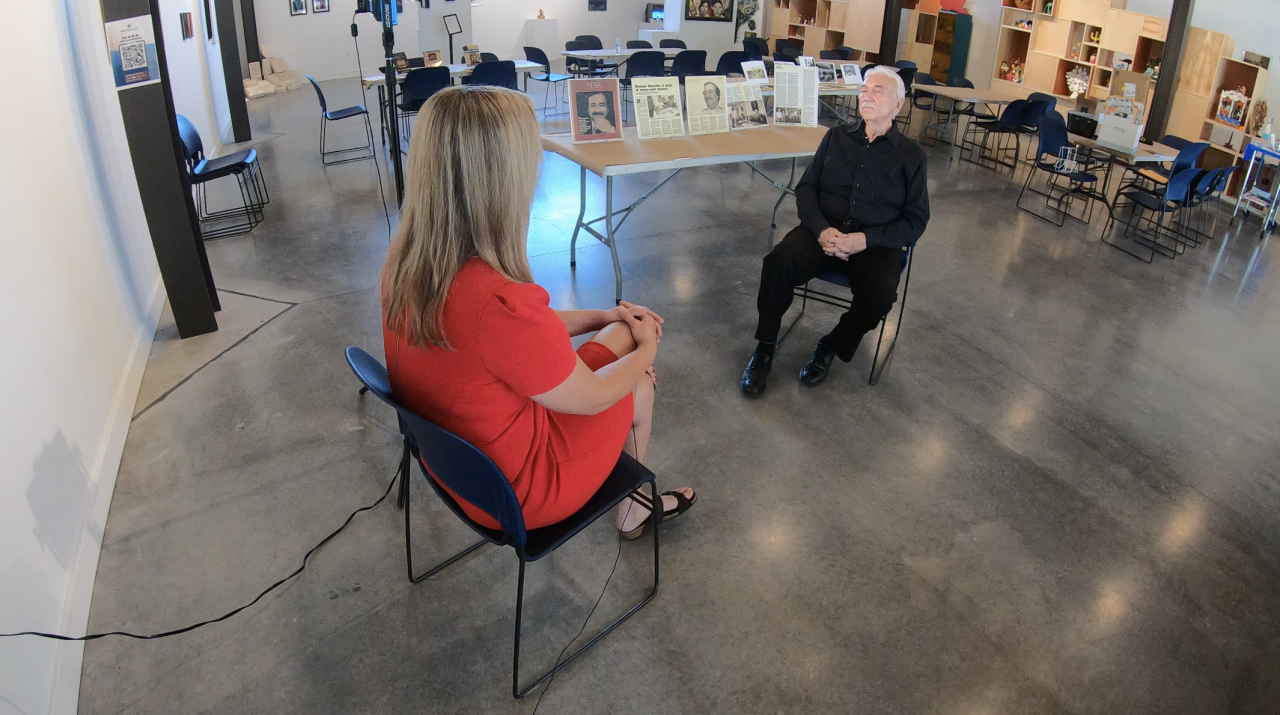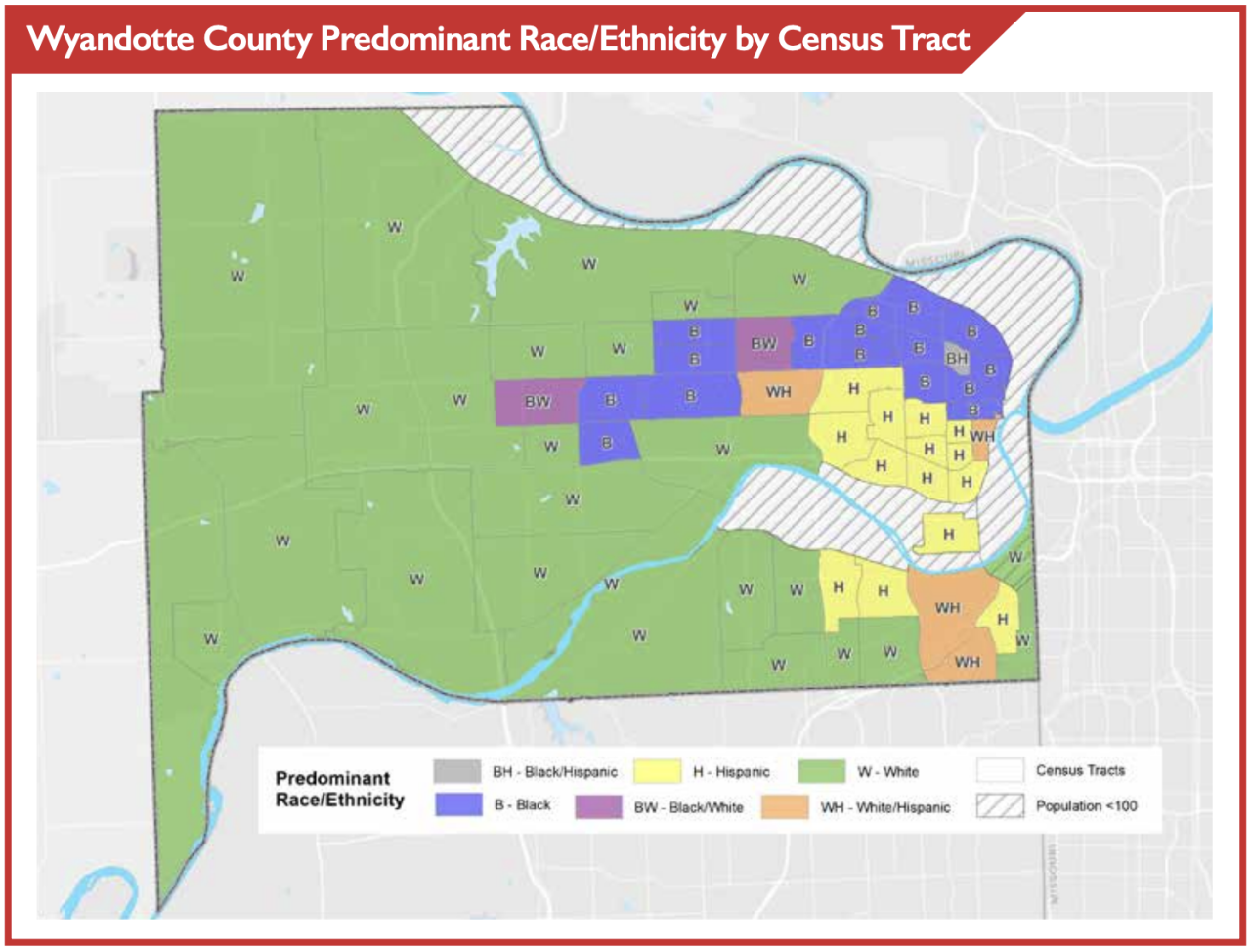HISTORY OF HISPANIC SETTLEMENT IN KANSAS CITY, KANSAS:
Editor's Note: This story is part two of a three-part series exploring environmental injustice in Wyandotte County. In part 1, we wrote about efforts local organizations are taking to improve environmental injustice. In Part 3, we bring in the voices of lifelong residents of KCK’s Argentine neighborhood and how those residents are advocating for healthier lives in their community.
All across the Kansas City region lie historical markers paying homage to the trails — Oregon, Santa Fe and California — that made Manifest Destiny a reality, leading Americans westward to trade and conquer lands that were already settled by others.

The Santa Fe Trail — whose trail head originated in Franklin, Missouri, beginning in 1821 but was moved to Independence, Missouri, in 1827 — differed from the others in a sense. It was predominately used for trading — rather than settlement — prior to the United State’s invasion and annexation of the Southwest, including the New Mexico territory, in 1846.
In 1821, Mexico gained its independence from Spain, and with that lifted its ban on international trade. At the time, Mexico’s border extended as far north as the Arkansas River, near present day Wichita, Kansas.
What coincided with Mexico’s independence was Missouri’s admission to the Union in 1821, and their proximity to one another ensued trade along the Santa Fe Trail, according to Gene T. Chávez, a historian who has been studying the history of the area since 1962.
“So that’s how the trade started, and it became a two-way thoroughfare, not only for commerce, but also cultural exchange,” Chávez, who is in residence at the Kansas City Museum, said.

Goods from east of the Mississippi River made their way to Kansas City via mighty American rivers, according to Chávez. From the Ohio River to the Mississippi and Missouri rivers, freight would often offload in the West Bottoms, and from there, head west along the trails and, eventually, railroads.
As history has shown, with trade comes human migration and settlement. It didn’t take long before Mexicans — who traversed the Santa Fe on mules and, eventually, wagons — began settling in the Kansas City area. Today, their legacy lives on as a third of Kansas City, Kansas', population identifies as Hispanic, according to the U.S. Census Bureau.
“Well the (history of Hispanic settlement in Kansas City) goes way back, and it really goes back to the days of the Santa Fe Trail, because the towns and cities along the Kansas River — or the Kaw River as they call it in Kansas — and the Missouri River were very much engaged in the trade along the Santa Fe Trail, and the supporting industries,” Chávez said.
As those supporting industries — including the Kansas City Stockyards along the Missouri and Kansas Pacific railroads in the West Bottoms — developed, so did transit. By the 1870s, wagon transit was replaced by railroads along the Santa Fe Trail, according to Chávez. As railroads expanded across the eastern United States and into the West, the demand for labor grew. Immigrants — from not only Mexico, but from around the world — traveled to the United States to find work in the rail yards.

“The wagons were replaced by railroads and that, again, was another draw for immigrants to come into those communities like Argentine, Armourdale, Rosedale, (and) the West Bottoms, working for the railroads,” Chávez said. “And it was natural for them to be a part of that trade, since their ancestors had really been involved since the Santa Fe Trail days.”
Many immigrants settled in the KCK area by the late 1800s and early 1900s found work in Argentine’s biggest industry at the time, which was silver smelterting, according to Chávez. He said the smelting industry was “tremendously toxic” and that those who lived in the Argentine community “suffered a great deal because of it.”
CURRENT HISPANIC POPULATIONS IN KANSAS CITY, KANSAS, & WHY THEY ADVOCATE AGAINST ENVIRONMENTAL INJUSTICE:
Even today, Armourdale and Argentine — and a decent amount of Rosedale — are predominantly Hispanic neighborhoods. When looking closer at Argentine, the majority of Latinx residents who reside there still live closest to the rail yard that makes the northern border of the community, according to a report by the Community Health Council of Wyandotte County in collaboration with the Kirwan Institute for the Study of Race and Ethnicity at The Ohio State University.

Today, those communities are bearing the brunt of environmental inequities that began in Kansas City, Kansas, over a century ago, according to CleanAirNow (CAN). CAN, a local nonprofit, claims environmental injustice is present in Wyandotte County, especially among the predominately Hispanic neighborhoods of KCK.

Historical maps and documents make evident the presence of long-term neighborhood disinvestment and redlining in KCK, and those neighborhoods continue to experience the worst health outcomes. In terms of length of life and quality of life, Wyandotte County ranks 103rd out of 104 counties in Kansas, according to the University of Wisconsin Population Health Institute’s County Health Rankings & Roadmaps (CHR&R) program. Johnson County, which borders Wyandotte County to its south, is ranked first in the state.
RELATED COVERAGE | 'I'm very rooted here': Lifelong Argentine resident advocates for healthier air in Wyandotte County
Ivonne Guitierrez, who advocates with CAN, transformed her Armourdale family home into a daycare for low-income Spanish-speaking families. While the daycare is in proximity to industrial zones and the nearby rail yard, she refuses to leave because the daycare — which is a Head Start program — offers services KCK families may have trouble finding elsewhere.

She also worries about diesel emissions from nearby trafficways, and Chávez said it’s something the communities of KCK have been subject to since the railroad was established there.
“The same thing was true with the railroads. All the railroads emitted diesel smoke. Before diesel, of course, it was coal fired engines,” he said. “Those carbon emissions and toxic emissions from those industries were pretty devastating to many people.”
While Guitierrez is rooted in Armourdale, staying put isn’t easy. A layer of dust sometimes covers the outdoor playground equipment located at her daycare, and since expressing her concerns to the EPA, the entity has conducted tests on the dust deposits. Results have not yet been finalized, but are expected to be by the last week of October, according to a spokesperson with the EPA.
"So every day before she brings the kids outside to play in the background, she makes sure that was out here right the environment there’s no odors, no pollution, or any build up of anything,” Beto Lugo-Martinez, the co-executive director of the environmental justice organization CAN, said as a translator for Guitierrez.

Joshua Tapp, the office director of intergovernmental affairs of the Environmental Protection Agency Region 7, said if the results show there is something harmful in the dust, the EPA will utilize additional resources to find what sources are producing the dust and what the concentrations are made of.
Gutierrez also has one of CAN’s air monitors stationed at her daycare, which came in handy on May 19, when a fire — that was 300 feet long, 100 feet wide and sent flames 70 feet into the air — broke out at the Advantage Metals Recycling facility in Armourdale.
Those around Kansas City — on both sides of the state line — saw black smoke billowing into the air, and some even reported a similar smell of what happens when you throw water on rusted-out metal.
While the EPA said the fire’s effects on local air quality that day were insignificant, some community members felt otherwise and that their local government, the Unified Government of Wyandotte County and Kansas City, Kansas, did not inform them of the incident in a proper manner, and as a childcare provider, Guitierrez agreed.

It wasn’t until 2:05 p.m. — the fire started around 5 a.m. — that the UG posted to social media about the fire, while neighboring Johnson County sent geo-targeted text messages and voicemails to its residents, advising them to stay indoors if they had any concerns about air quality within a few hours of the fire.
KSHB 41 meteorologist Wes Peery reported a code orange air quality alert for the area following the fire.
A CODE ORANGE air quality alert has been issued for Kansas City because of the smoke/particulate matter from the KCK recycling plant fire.
— Wes Peery (@WesWeather) May 19, 2023
This wildfire smoke may also be contributing some too. #mowx #kcwx #kswx pic.twitter.com/gH8LJ0fRmO
At a community meeting led by CAN at the Iglesia Canaán church in Armourdale on Sept. 19, community members and representatives from the Kansas Department of Health and Environment, EPA, KCK Fire Department, Sharice David’s Office and the Unified Government of Wyandotte County gathered to talk about emergency responses in case of a train derailment.
After presentations from CAN and the Federal Rail Association, organizers of the meeting allotted time for a community discussion. While the meeting was intended for conversations regarding emergency responses, community members took the time to ask government representatives about the Advantage Metals fire and why residents were not notified of the fire until roughly nine hours after it began.

“Our challenge for that particular incident was determining if there was a threat, and as it turned out there was not. And unfortunately, the folks in Johnson County perceived a threat that didn’t exist,” Director of Emergency Management of the Unified Government Matt May said.
May said the wildfires in Canada posed a greater risk to local air quality on that particular day compared to the fire at Advantage Metals.
Atenas Mena, co-executive director of CAN, responded to May, saying some community members are more vulnerable to poor air quality, and that they would’ve liked to have been made aware of the fire.
Despite the meeting's initiative to focus on emergency responses in case of a train derailment, community members took advantage of the presence of officials and plagued them with questions about the Advantage Metals fire that occurred exactly four months prior.
Amanda Devriese-Sebilla, a resident of the nearby Argentine neighborhood, asked May if any new regulations had been made since the fire.
"Not that I am aware of," May said.
—
Reporting on this series was made possible through a collaboration of KSHB 41 Digital Reporter Lily O'Shea Becker and KSHB 41 I-Team anchor Caitlin Knute. The series incorporates months of interviews, tours, site visits and research. You can contact Lily at lilyoshea.becker@kshb.com and Caitlin at caitlin.knute@kshb.com.





